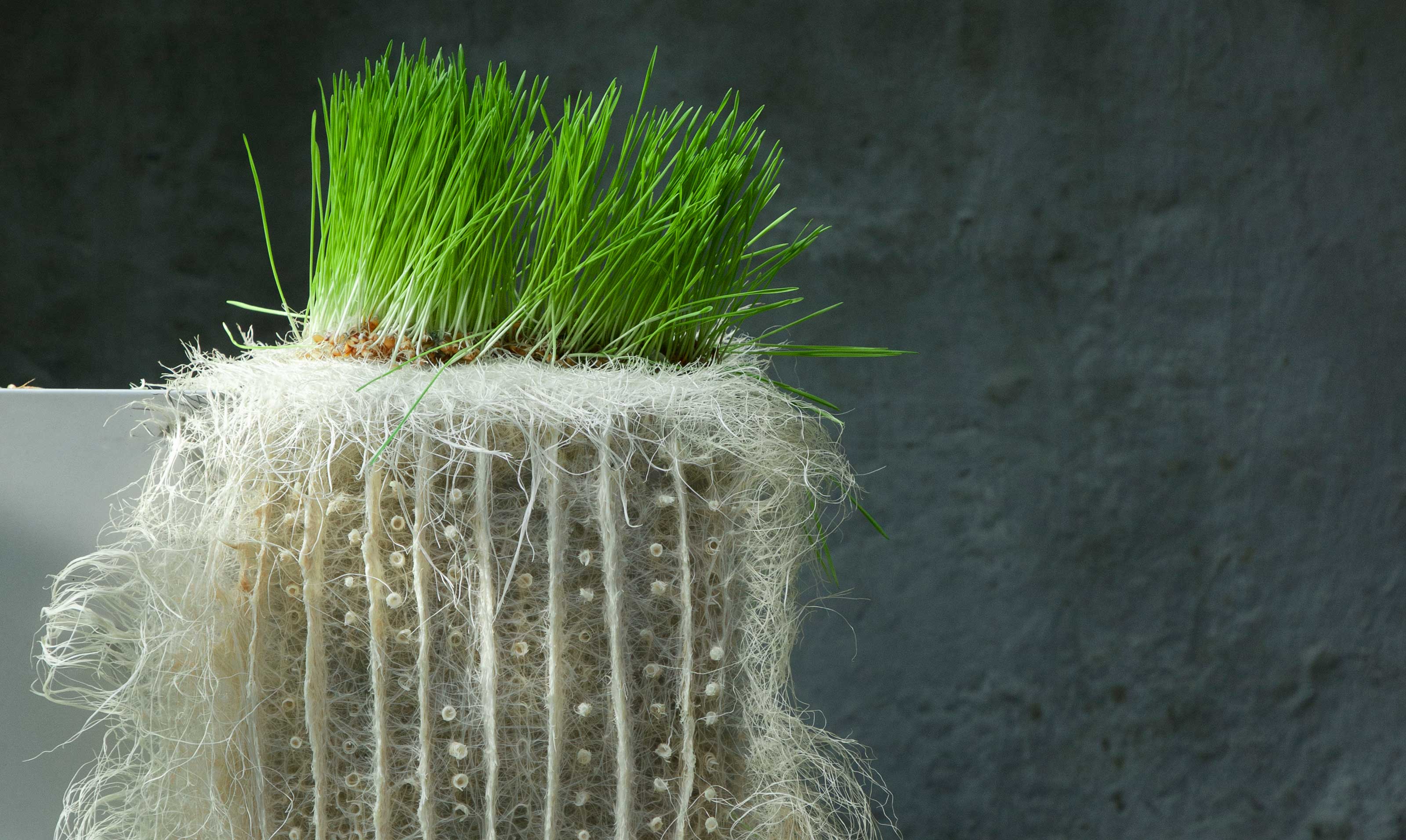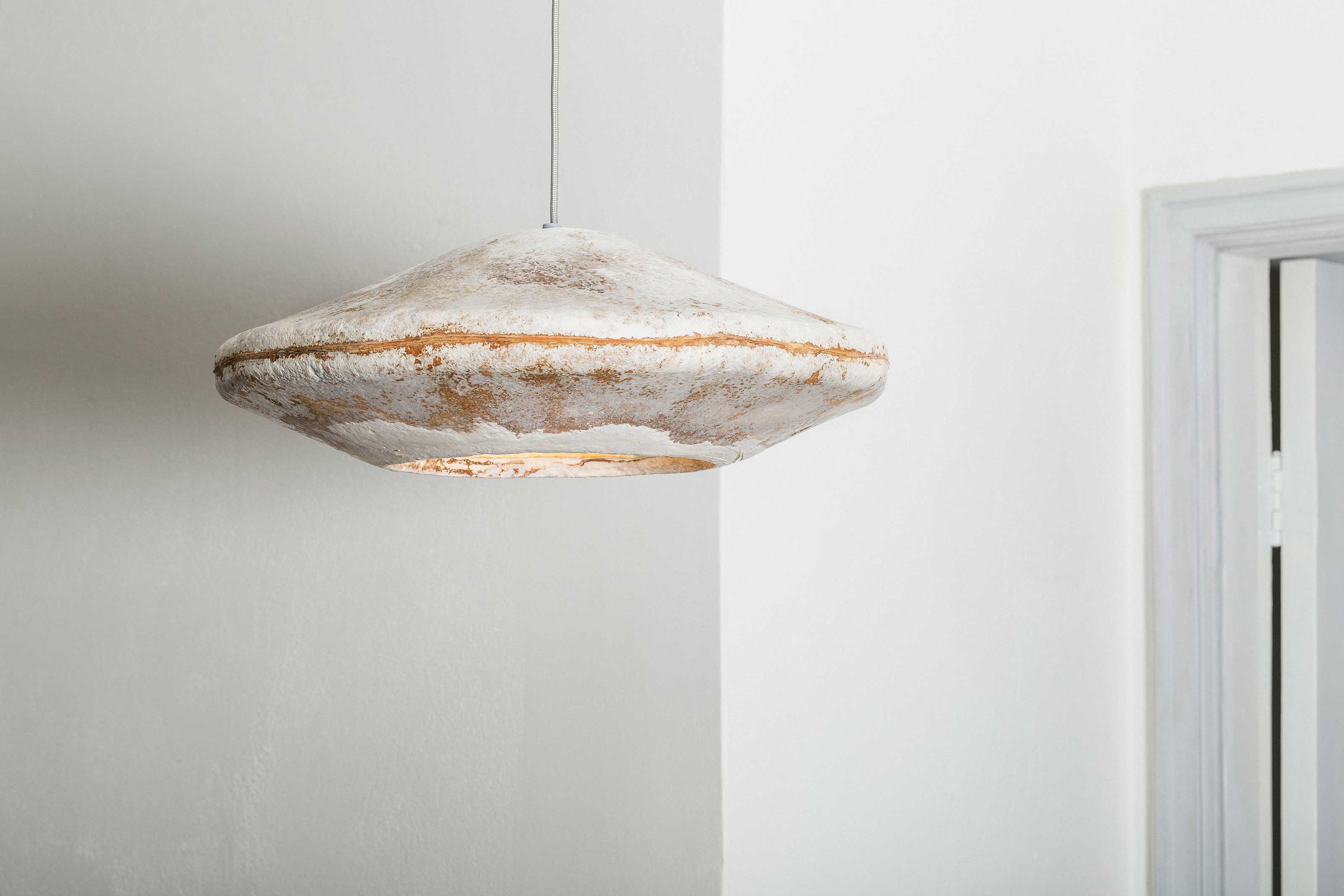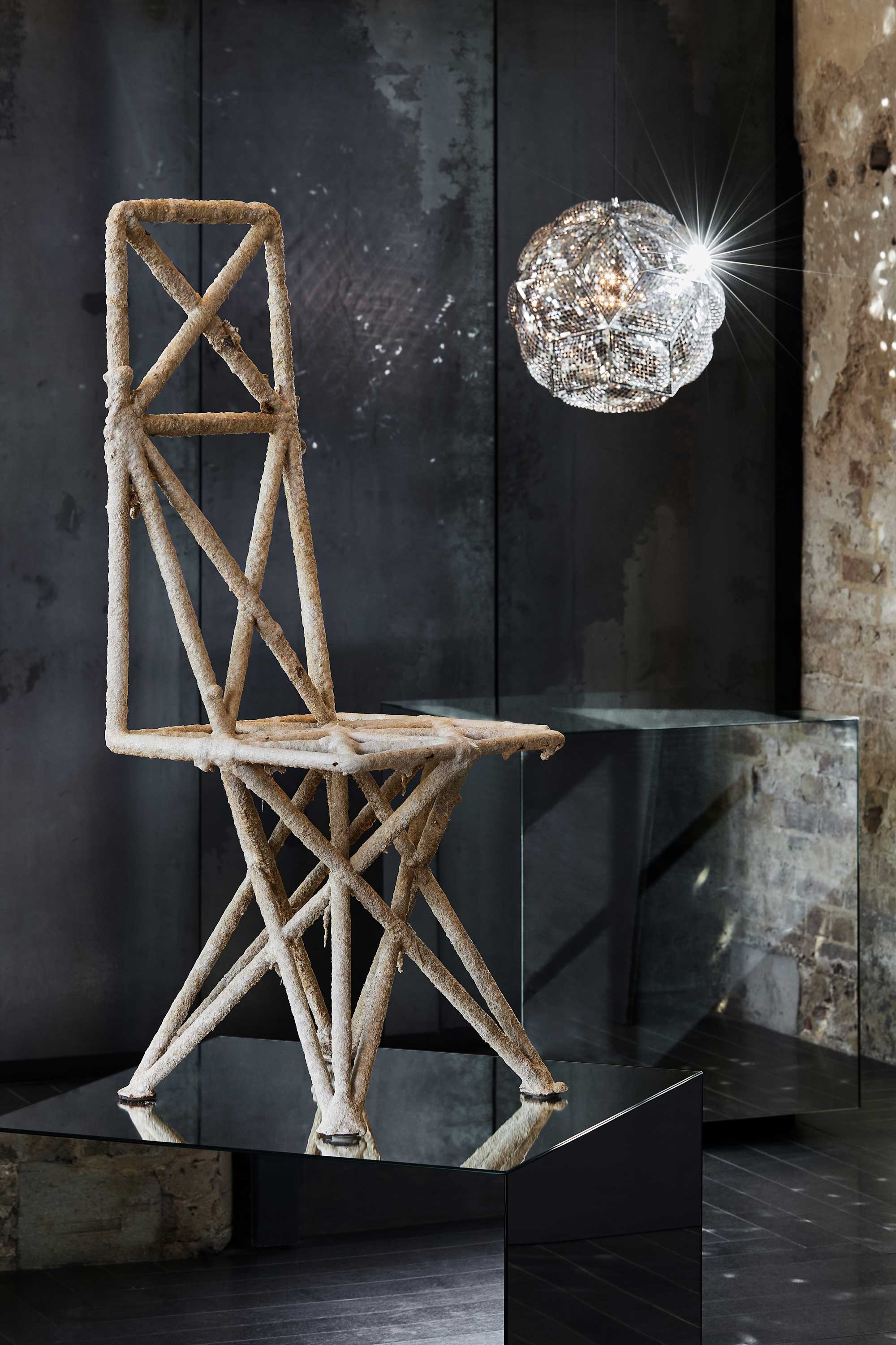Meet the designers using bio-materials to create amazing 'grown' homewares
From growing grass roots into intricate forms, to a type of natural concrete grown underwater, designers are making bold strides with these unusual, natural materials


When Tom Dixon unveiled a 20th anniversary exhibition this year, it served as a reminder of how the international designer has been exploring, experimenting with and pioneering materials for the last 20 years. Perhaps the most interesting, right now, are those you could consider part of ‘bio-design’ - materials made from natural, regenerative sources.
You can count timber and cork, both already part of Tom’s designs, in this category, but it’s the materials on the less-trodden path - a chair made from a type of seagrass, towers made from mycelium (the vegetative part of fungus) - that are the real conversation starters. The question is, are these materials a novelty, or are they an important part of the future of design? 'We've got to find alternative ways of extracting materials,' Tom tells us, 'and we're surrounded with things which are regenerative, so we've got to learn to love them and to use them.'
More than just an interior design trend, these bio-materials, then, could just have a formative role in the future of design.

Hugh is Livingetc.com's deputy editor, and an experienced design journalist. Here, he spoke to the pioneers designing products with bio-materials that are cleverly grown into the forms of stylish homewares products.
Why should we be looking at bio-materials?
It’s a belief shared by artist and bio-designer Zena Holloway, who creates fashion and homewares formed from intricate meshes of grass roots. 'I think it's going to be essential in the future that there is an element of material intelligence,' she tells us. 'Plastic is a byproduct of the fossil fuel industry. It’s this cheap thing that nobody wanted, which we, in past, redesigned its use and made it into this kind of disposable material, which in fact, it shouldn't be at all. Now all sorts of problems are occurring and nobody really knows what the true damage will be.'
What can bio-materials be used to make?

Zena’s work, which is created by growing grass root in hand-carved beeswax moulds that give the resulting textile shape, taps into the raw appeal of this sustainable material. That is, the pieces are beautiful in nature, and don’t seek to hide their providence. 'I considered growing it in rigid, square blocks,' she says, “but that's not what it wants to do. It wants to fray at the edges, it wants to create that kind of delicate, kind of fizzle- out shape that roots do because they're looking for spaces to grow into. I realised that’s the beautiful aesthetic quality of the roots, which you just don't get when you're weaving on a loom.'

It’s a similar story for designing with mycelium, where the resulting products take on the unique texture that comes from growing this fungal material. 'It’s a material that can be shaped in any kind of form so before growing it into a lamp or a table, formwork should be made,; explains Siim Karro, co-founder of Myceen, a design studio that specialises in using mycelium for the likes of kitchen pendant lighting, plinths and acoustic panels. 'Then the leftovers, mainly from the timber or agricultural industry, are mixed with mycelium. This mixture is then placed in the mould where it is left to grow. After a few days, the material is strong enough to remove the formwork. The process is finalised by drying the material completely so that it can’t grow any further.' The resulting forms have an undeniable fungal quality that embraces the natural materials.
Yet, these and other bio-design materials aren’t just a focus for the future for their looks. By nature, they have desirable qualities too - their strength, how fast they grow, how little energy they require, as well as how they fit into circular design and can return to the earth when no longer required. 'Mycelium-based material has been used more and more in design because it has so many beneficial properties and potential,' Siim explains. 'The process of growing these materials makes use of leftovers from other industries and has energy-efficient production making it truly climate-positive. The material does not contain any toxic additives which make it perfect for a healthy interior climate.'
The Livingetc newsletters are your inside source for what’s shaping interiors now - and what’s next. Discover trend forecasts, smart style ideas, and curated shopping inspiration that brings design to life. Subscribe today and stay ahead of the curve.
Are bio-materials too niche?
So why aren’t they used in design more? In reality, these materials still struggle to compete with modern manufacturing methods of other materials, especially when it comes to cost.
'It’s a fascinating field, but one that’s not very mature yet,' Tom says, but with more people out there being inspired by these materials, there’s promise for future uses beyond ornament. 'A lot of these things are fanciful and just done for a show, but that’s experimentation,' Tom continues. 'You might have a material which is too expensive, too ugly, too slow to grow for the contemporary world, but it doesn't mean that somebody could hop onto it and make it feasible later.'
For those more mainstay materials of bio-design, there’s still experimentation to be had. 'There's a usefulness in trying to find new applications for things that have been around for a long time,' Tom says. 'The fact is that wood, bamboo and cork have been around for forever, and people have used it in different ways. I think rediscovering those ideas and promoting them is definitely something that is part of the design agenda right now.'
And yet even for Zena, a medium like grass root has unexplored opportunities. 'I can grow it fine and lacey, I can grow it six inches thick. You suddenly realise actually, you're not limited by the pattern, you're not limited by the thickness of it, you're not limited by the texture. It's all just up in the air. It's like, wow, where do I go?'
What other bio-materials are there?
The materials mentioned are only the tip of the iceberg, too. There are many others out there pioneering other bio-materials. Further reading suggestions include the likes of Neri Oxman, who has re-imagined how silkworms can be used to create textile forms, and the designers embracing new vegan leathers made from organic matter such as pineapple waste. One of Tom’s ongoing projects is based around Biorock, a type of naturally occurring concrete that can be ‘grown’ underwater, that the designer has used to create chairs and tables.

For bio-designers in the know, seaweed is an area of particular interest at the moment, and a natural resource with the opportunity to make a real impact. 'Seaweed is fascinating stuff, and it has a big part to play as a carbon sink in the future,' Zena Holloway explains. 'One acre of seaweed farm takes up about 20 times more carbon than a land-based kind of forest.'
So, while it’s unlikely that buying a lampshade made from funghi or a chair made from seaweed is an action that’s not going to save the world in and of itself, it’s all part of changing the narrative around the materials we choose in our day-to-day lives. As Tom says, 'if there's any way of moving conversation forward, these fantastical uses for these materials might just spark the imagination of something more serious.'

Hugh is Livingetc.com’s editor. With 8 years in the interiors industry under his belt, he has the nose for what people want to know about re-decorating their homes. He prides himself as an expert trend forecaster, visiting design fairs, showrooms and keeping an eye out for emerging designers to hone his eye. He joined Livingetc back in 2022 as a content editor, as a long-time reader of the print magazine, before becoming its online editor. Hugh has previously spent time as an editor for a kitchen and bathroom magazine, and has written for “hands-on” home brands such as Homebuilding & Renovating and Grand Designs magazine, so his knowledge of what it takes to create a home goes beyond the surface, too. Though not a trained interior designer, Hugh has cut his design teeth by managing several major interior design projects to date, each for private clients. He's also a keen DIYer — he's done everything from laying his own patio and building an integrated cooker hood from scratch, to undertaking plenty of creative IKEA hacks to help achieve the luxurious look he loves in design, when his budget doesn't always stretch that far.